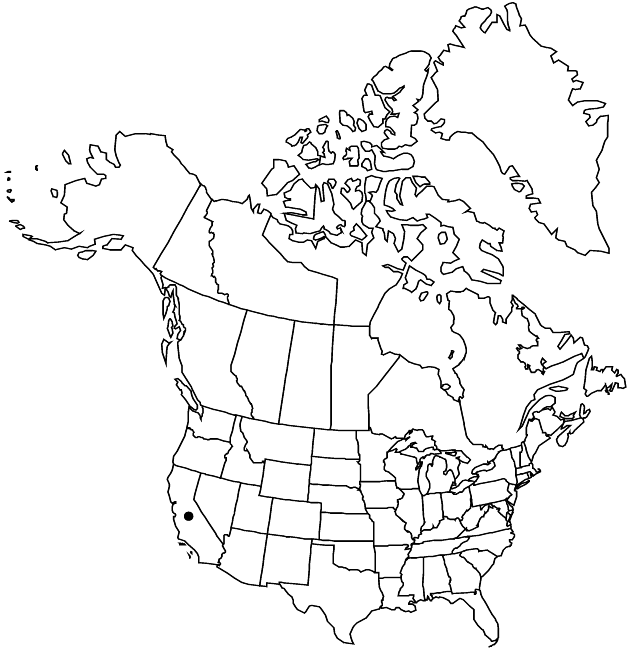Cirsium andrewsii
Fl. W. Calif., 506. 1901.
Biennials (or short–lived monocarpic perennials), 60–200 cm; taprooted. Stems several, erect to spreading, thinly arachnoid, soon glabrous; branches ± fleshy, usually much branched proximally, spreading to ascending. Leaves: blades ± elliptic, 30–75 × 10–20 cm, shallowly to deeply pinnatifid, lobes oblong to ovate, unlobed or with several prominent secondary lobes or large teeth, obtuse to acute, main spines 2–7 mm, abaxial gray arachnoid-tomentose, adaxial faces thinly arachnoid, glabrate; basal often present at flowering, spiny winged-petiolate; principal cauline sessile, bases clasping with broad, spiny-margined auricles, reduced distally, spinier than proximal; distal much reduced, spines 7–20 mm. Heads several–many, in congested corymbiform arrays. Peduncles 0–7 cm. Involucres ovoid to hemispheric or campanulate, 1.5–3 × 1.5–5 cm, sparsely to densely arachnoid, finely short-ciliate. Phyllaries in ca. 6 series, dark green or brown or with stramineous margins and a darker central zone, imbricate, linear-lanceolate (outer) to linear (inner), abaxial faces without glutinous ridge; outer and mid bodies appressed, spiny-ciliate, apices long-spreading to ascending long-acuminate, spines straight, stout, 5–15 mm; apices of inner straight or twisted, long, entire, flat or spine-tipped. Corollas dark reddish purple, 17–24 mm, tubes 8–11 mm, throats 3.5–6 mm, lobes 5–7 mm; style tips 3–4 mm. Cypselae dark brown, 4–5 mm, apical collars narrow; pappi 15 mm. 2n = 32.
Phenology: Flowering spring–summer (May–Sep).
Habitat: Headlands, ravines, seeps near coast, sometimes on serpentine
Elevation: 0–100 m
Discussion
Of conservation concern.
Cirsium andrewsii occurs along the coast of north-central California from San Mateo to Marin counties. It reportedly hybridizes with C. quercetorum (F. Petrak 1917; J. T. Howell 1960b).
Selected References
None.
